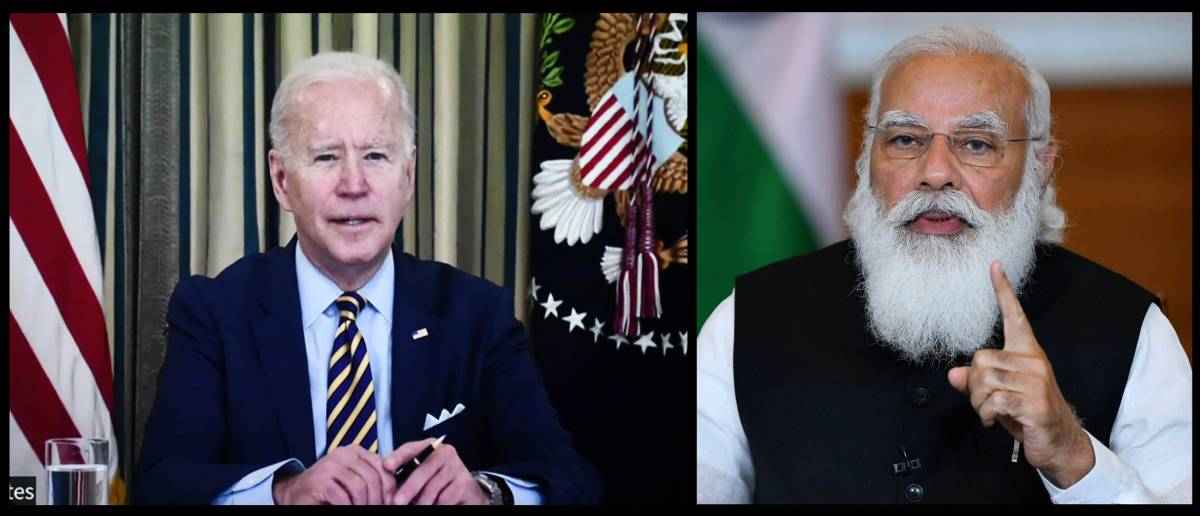There are many in the higher levels of policymaking in Washington and Delhi who cling to the belief that the possibility of large-scale kinetic conflict over the Himalayan massif, the South China Sea or Taiwan is an impossibility, writes Prof. Madhav Nalapat
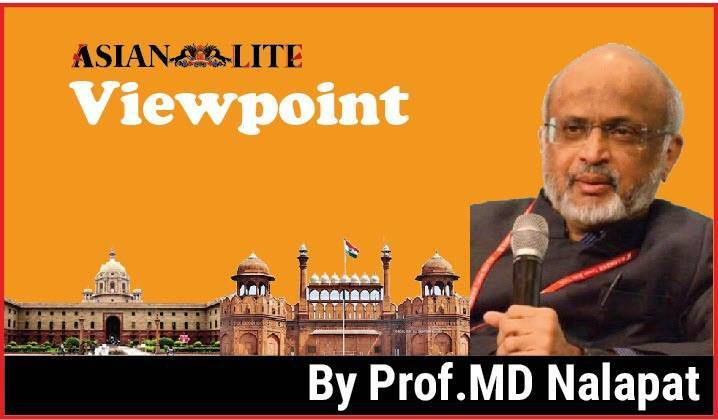
The absence within the Joe Biden administration of high-level in-depth expertise on today’s India resulted in the earlier errors made by wings of the US Government in dealing with the 21st century’s most consequential partner for the United States. Despite its puny trade figures, the Sino-Pakistan lobby within the Biden administration ensured that India was placed alongside China both as a currency manipulator and as a country where freedom of worship has been severely curtailed. The claim is that this took place since Narendra Modi became Prime Minister in 2014. At the same time as assistance from the Indian side was needed to ensure that President Ashraf Ghani (the elected Head of State and Government in Afghanistan) does not go the Najibullah way at the hands of the Taliban and its GHQ-linked affiliates, a US Navy vessel not only entered India’s exclusive economic zone but made a public song and dance about the incursion, in tones that once again equated China with India.
State Department spokesperson Ned Price had during his long stint in the CIA established cosy relationships with that longstanding auxiliary force of the PLA, GHQ Rawalpindi. Where the Pakistan lobby is active, the China lobby cannot but be close, and Price lived up to their expectations by insensitive comments regarding the need for India to scale up vaccine production with the help of the US. If the State Department spokesperson were to be taken seriously as reflecting the views of the US Government, he would have made Secretary of State Anthony Blinken sound less than sincere in the latter’s outreach to India. Fortunately, unlike some of his subordinates, the US Secretary of State has shown a comprehensive understanding of the security paradigm consequent to the onset of Cold War 2.0 between the PRC and the US.
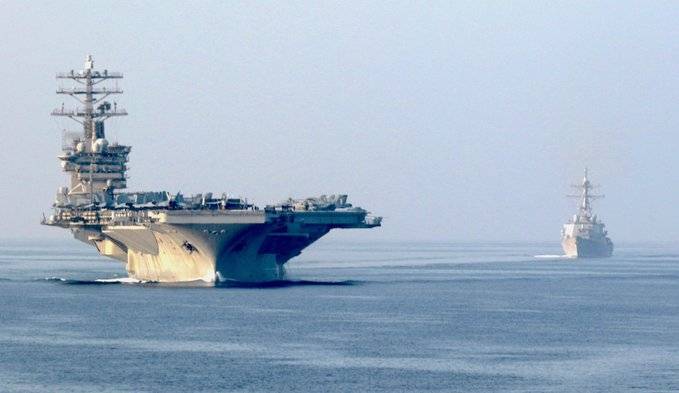
SINO-PAK LOBBIES TOGETHER IN U.S.
Despite, or perhaps because of, the idealism of Senator Bernie Sanders, his 2019 Presidential campaign staff got infiltrated by elements that were embedded in the Sino-Pakistan lobbies working hard in Washington to further the interests of Beijing and Rawalpindi. The Sanders campaign also contained idealists of the stamp of the Senator himself, and fortunately, such elements were a majority, but their “street smarts” were limited. In contrast, skill in inserting themselves into key slots within the US administration ensured that members of the Sino-Pakistan lobby infiltrated the government headed by President Biden and Vice-President Kamala Harris. It must be added that only a segment of the Pakistani-American community backs GHQ Rawalpindi and its longstanding and generous mentor, the PLA.
Most belonging to this group have family in Pakistan that are beneficiaries of the control of much of the economy by the army. Other Pakistani-Americans understand that the military in Pakistan is a parasitical force that is draining away the resilience of the country of their origins. The army has, especially since the resignation as Chief of Army Staff by General Pervez Musharraf in 2007, been firmly within the PRC camp while declaring fealty to US interests and occasionally performing errands for their former mentor. The GHQ Rawalpindi lobby within Washington functions closely with the PLA lobby, which is among the primary reasons why Beijing continues to be so generous to the Pakistan military even after the value of that force as a means of constraining India has declined. Both in India as well as the US, the Russian and PRC lobbies function apart from each other, while the Pakistan and China lobbies work closely together. Apart from “influence operations” seeking to ensure that India and the US do not get into a military alliance, Moscow is not active in any of the measures designed to weaken India, although its associates are intensely active in the US, much as the Sino-Pakistan lobby is in India.
Also read:China’s new maritime law may escalate tensions in Indo-Pacific

TRYING TO DISPLACE DOLLAR PRIMACY
Unlike earlier estimates about Joe Biden being “soft and predictable” on China, the 46th President of the US has shown himself to be no different from the O’Brien-Pompeo camp in the Trump administration in tackling the danger to US interests represented by the challenge posed by Chinese Communist Party General Secretary Xi Jinping. Wall Street retains considerable influence within the Biden administration, mainly through the Clinton and Obama camps. However, both Biden as well as Kamala Harris have demonstrated their unwillingness to put the interests of Wall Street above those of Main Street. Financial barons in the US have long profited by the PRC at the cost of participating in the hollowing out US manufacturing and working against US influence and interests.
Their mindset appears to be that even if the country as a whole suffers, their own personal fortunes would grow. Those tasked with tracking developments in the ongoing battle being waged by China and Russia to displace the US dollar as the global reserve currency have suggested “active” rather than “passive” defence. This would involve (i) the delisting of PRC-linked ADRs that fail to comply with US accounting rules, and (ii) freezing of assets located in the US of Communist Party of China (CCP) bigwigs. Should Canada and some in the EU join in such a freeze, the impact on the personal wealth of the CCP tigers would be severe, unless they and their families were to relocate to the US or other major democracies. Even the “people’s President”, Barack Obama, gave a free pass to Wall Street operators even after they sent several million US citizens into poverty in 2008, but such immunity may not get continued under Biden, especially in the case of fund managers who send US capital to PRC-controlled entities active in the production of weapons such as missiles and aircraft carriers.
Experts in financial warfare have pointed out that the PRC is seeking to topple the US dollar from its perch at the top of the currency scale. The CCP leadership expects to take advantage of the fact that essential spending plus military expenditures closed in on 140% during the Trump administration, and the gap is rising further under Biden. The US Federal Reserve Board is printing trillions of dollars in order to enable President Biden and Vice-President Harris to restructure society in a manner that ameliorates the inequities of the past. Through hoarding gold rather than buying US treasury bills since the time Xi Jinping took charge of the PRC in 2012, his introducing the Digital Currency Electronic Payment system and the emphasis on overtaking the US in Artificial Intelligence by 2024, the primacy of the US is under a challenge led by Beijing that has not been seen for over a century.
Getting countries to de-link from the US dollar to other currencies, preferably the RMB, has been an objective of the CCP leadership that has been visible since 2017. As a Hong Kong-based expert on currency wars pointed out, what the CCP leadership seeks to displace is the US dollar as the “unit of account”. To this end, even US allies such as Saudi Arabia are being encouraged to abandon the petrodollar in favour of a more unwieldy basket of currencies. President Biden is aware that although 80% of world trade is still denominated in dollars, as is 63% of foreign bank reserves, these could slide towards the much smaller share of the US in global GDP. Such a reset of the dollar would affect global demand for the currency and make it more difficult to keep printing trillions of dollars to fund the operations of the US Government in the manner both Republican as well as Democratic administrations have been doing. Losing the currency war would significantly degrade the ability of Washington to prevail over Beijing in matters of trade, security and technology, besides limiting its longstanding superpower freedom of action significantly.
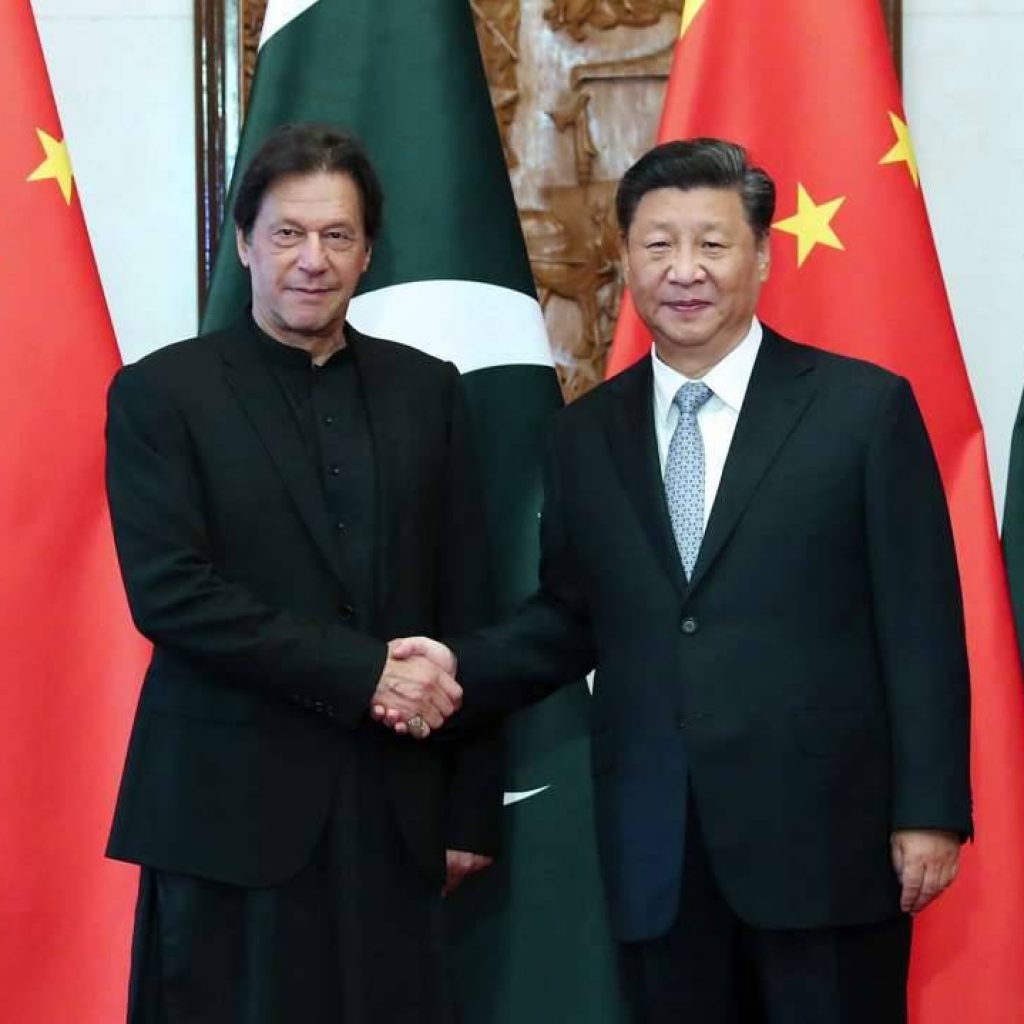
SINO-PAK LOBBY TARGETS INDIA
The Russian lobby in the US has been seeking to ensure that the Democratic Party loses control of the House of Representatives in 2022, besides losing further ground in the US Senate and in gubernatorial races. The Pakistan lobby has a single-point agenda, which is to drive apart the US and India, mainly through scare stories about the domestic policies of the Narendra Modi government. The PRC lobby is focused on ensuring that its “kaizen” tactics of constantly improving its overall trade and military competitiveness vis-a-vis the US are ignored in practice by the US administration, so that its continuing expansionism passes without any, except verbal and symbolic, challenges. While the Sino-Russian lobby has been active in using social media to increase fault lines in US society, the Sino-Pakistan lobby has been similarly active in performing the same task in India.
Also read:Blinken ,Japanese FM discuss free ‘Indo-Pacific’
They see an opportunity in the lack of preparations by the Union Government to the second wave of Covid-19 infections. The last thirteen months could have been used in creating local stockpiles of medication, oxygen supply and hospital bed space across India, but attention appears to have been diverted towards Assembly elections, especially in Bengal. Rather than decentralise authority and operations, these were concentrated in the Central government and appears to have been lost sight of until the full force of the second wave struck two months ago, by which time it was too late to save tens of thousands of lives and to ensure that unbearable misery in millions was avoided. For the first time since 2013, there has been a visible dip in the personal popularity of the Prime Minister, the fulcrum on which the present government rests, but which is expected to get rectified through innovative action and personnel choices by the close of July.
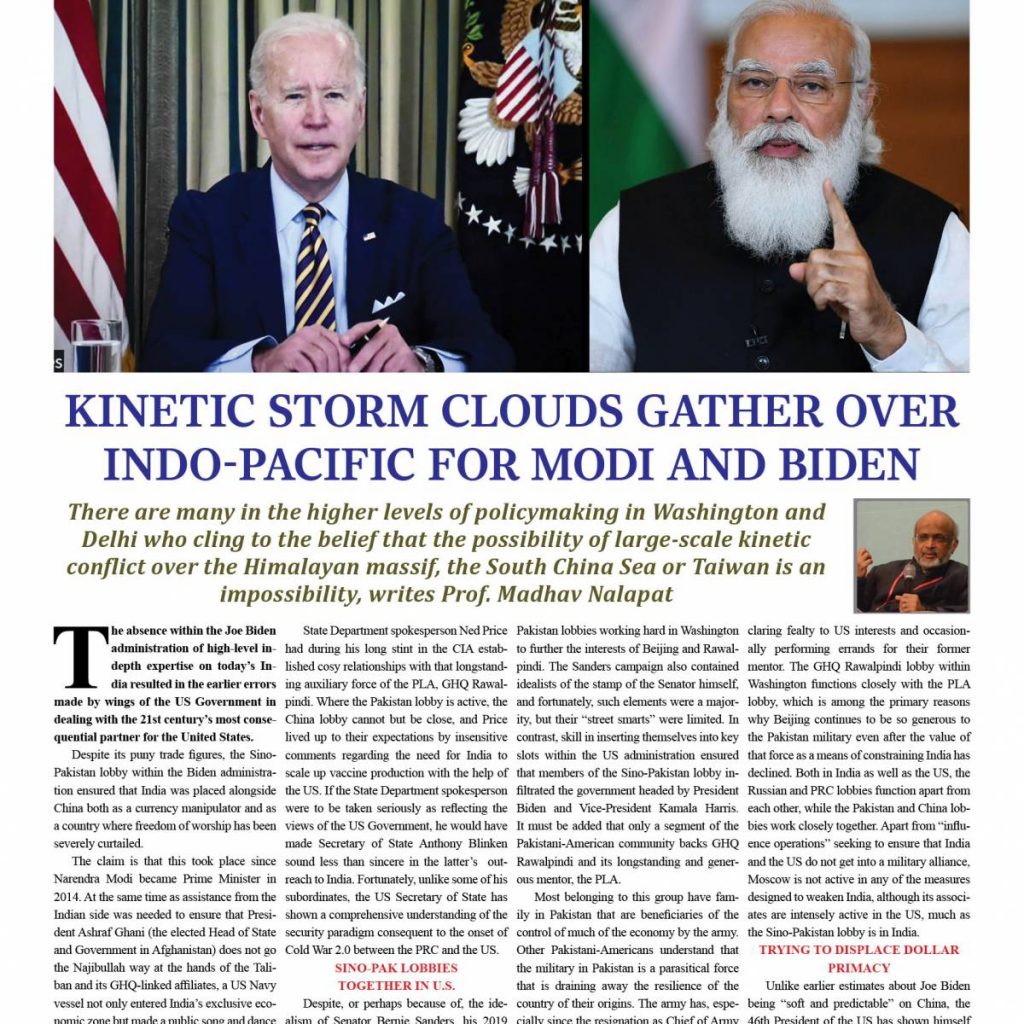
GIVE INDIA THAAD
The Lutyens Zone is characterised by the silo model of functioning, in which each agency views a situation or a project from its own perspective without factoring in its impact on others. Given the accumulated knowledge on the US side of the mode of functioning of GHQ Rawalpindi, the adoption of the THAAD system would have ensured a sufficient body of information and intelligence sufficient to neutralise Pakistan’s lethal force in the event of a kinetic conflict involving that country. At the same time, the technological consanguinity of China and Russia makes it risky to believe that methods of dealing with the challenges to an attacking force caused by the S-400 system have not been shared by Moscow to Beijing.
A missile defence system of the magnitude of the S-400 (which is undoubtedly a testament to Russia’s excellence in matters of defence production) needed to be looked at through a comprehensive scan, rather than through the lens of a particular service or agency. It may still be possible to persuade the Biden-Harris administration to install the THAAD system in India in the manner that it is already functional in Japan and the Republic of Korea. Given the benefits to US security interests of such a move by India, it would be worthwhile for Washington to install the system at concessional rates, thereby defraying part of the expense that would be involved in walking away from the S-400 deal. Not that relations with Russia should be put on a lower trajectory than at present. Whether it be in the Vladivostok-Chennai corridor or in the development of Siberian resources, Moscow and Delhi need to substantially increase their engagement, including in terms of capital expended.
Someday in the future, it may become possible that the Russian Federation emerges as a neutral player during the PRC-US Cold War 2.0, rather than as an essential part of one side, in the manner that Moscow is now. Russia, a close friend of India, may also “do a China” in Cold War 2.0, and switch to the US side in the manner that Beijing pivoted to the side of Washington during the latter part of Cold War 1.0 (between the USSR and the US). President Putin must surely be aware of what happened during Cold War 1.0, grandmaster of geopolitical chess that the President of the Russian Federation is.

PREPARE OR LOSE
Given the rise in expectations generated among the Chinese people by President Xi, it is essential for him to ensure that China and its allies are seen to be prevailing over the US and its partners in the ongoing contest between them. The present crisis created in India by the second wave of SARS CoV-2 was caused by the refusal to factor in the possibility that things could get much worse rather than continue to improve. In much the same way, there are more than a few in the higher levels of policymaking in Washington and Delhi (although no longer in Moscow or Beijing) who cling to (a) the belief that the possibility of kinetic conflict over the Himalayan massif, the South China Sea or Taiwan is an impossibility, and who (b) ignore the manner in which what may be termed “comprehensive war” is being waged by the PRC against countries that it regards may challenge it in future, if not kneecapped in the present.
Understanding the situation and preparing for a scenario which may not just be “worst case”, but an inevitability is needed on the part of both Prime Minister Modi and President Biden. A series of steps are needed to ensure that the kinetic challenge of the future will end with the victory of the two biggest democracies on the planet. The lobbies that are working to stifle the action needed to prepare for the evolving situation need to be neutralised. Had some hitherto unknown elements in the bureaucracy not succeeded in ensuring that hospitals across India were denied the oxygen generation equipment that they needed, equipment that was easy to install were the necessary permissions given for supplying them, lives would have been saved. Prime Minister Modi acted about a month ago to remove some of these, and lives will be saved because of his move, although those lost can never be brought back.
The time has come for Prime Minister Modi and President Biden to discuss and agree upon what is essential for both countries to do to ensure that the sovereignty and territorial rights over sea and land of the littoral states of the Indo-Pacific are protected from extremist violence and expansionary authoritarianism. Otherwise, both will face the anger and dismay of their people as they confront a situation that will be much more difficult to control than would have been the case, had they made better preparations to face the storm that is coming the way of both democracies. The time for ensuring such readiness is now, just as the time for the Government of India and the state governments to prepare for the second wave of Covid-19 was this time last year, rather than last month this year.
Also read:India, UK to ink £1 bn trade deal

